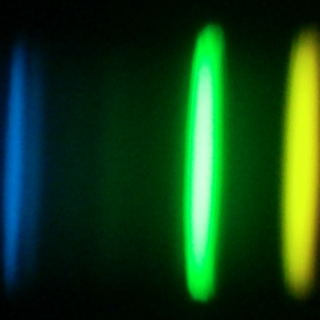Bibcode
Cooper, W. J.; Jones, H. R. A.; Smart, R. L.; Folkes, S. L.; Caballero, J. A.; Marocco, F.; Gálvez Ortiz, M. C.; Burgasser, A. J.; Kirkpatrick, J. D.; Sarro, L. M.; Burningham, B.; Cabrera-Lavers, A.; Tremblay, P. E.; Reylé, C.; Lodieu, N.; Zhang, Z. H.; Cook, N. J.; Faherty, J. F.; García-Álvarez, D.; Montes, D.; Pinfield, D. J.; Rajpurohit, A. S.; Shi, J.
Referencia bibliográfica
Monthly Notices of the Royal Astronomical Society
Fecha de publicación:
10
2024
Número de citas
1
Número de citas referidas
1
Descripción
As part of our comprehensive, ongoing characterization of the low-mass end of the main sequence in the Solar neighbourhood, we used the OSIRIS instrument at the 10.4 m Gran Telescopio Canarias to acquire low- and mid-resolution (R${\approx }$300 and R${\approx }$2500) optical spectroscopy of 53 late-M and L ultracool dwarfs. Most of these objects are known but poorly investigated and lacking complete kinematics. We measured spectral indices, determined spectral types (six of which are new) and inferred effective temperature and surface gravity from BT-Settl synthetic spectra fits for all objects. We were able to measure radial velocities via line centre fitting and cross correlation for 46 objects, 29 of which lacked previous radial velocity measurements. Using these radial velocities in combination with the latest Gaia DR3 data, we also calculated Galactocentric space velocities. From their kinematics, we identified two candidates outside of the thin disc and four in young stellar kinematic groups. Two further ultracool dwarfs are apparently young field objects: 2MASSW J1246467+402715 (L4β), which has a potential, weak lithium absorption line, and G 196-3B (L3β), which was already known as young due to its well-studied primary companion.
Proyectos relacionados

Exoplanetas y Astrobiología
La búsqueda de vida en el Universo se ha visto impulsada por los recientes descubrimientos de planetas alrededor de otras estrellas (los llamados exoplanetas), convirtiéndose en uno de los campos más activos dentro de la Astrofísica moderna. En los últimos años los descubrimientos cada vez más numerosos de nuevos exoplanetas y los últimos avances
Enric
Pallé Bago

Abundancias Químicas en Estrellas
La espectroscopía de estrellas nos permite determinar las propiedades y composiciones químicas de las mismas. A partir de esta información para estrellas de diferente edad en la Vía Láctea es posible reconstruir la evolución química de la Galaxia, así como el origen de los elementos más pesados que el boro, forjados principalmente en los interiores
Carlos
Allende Prieto